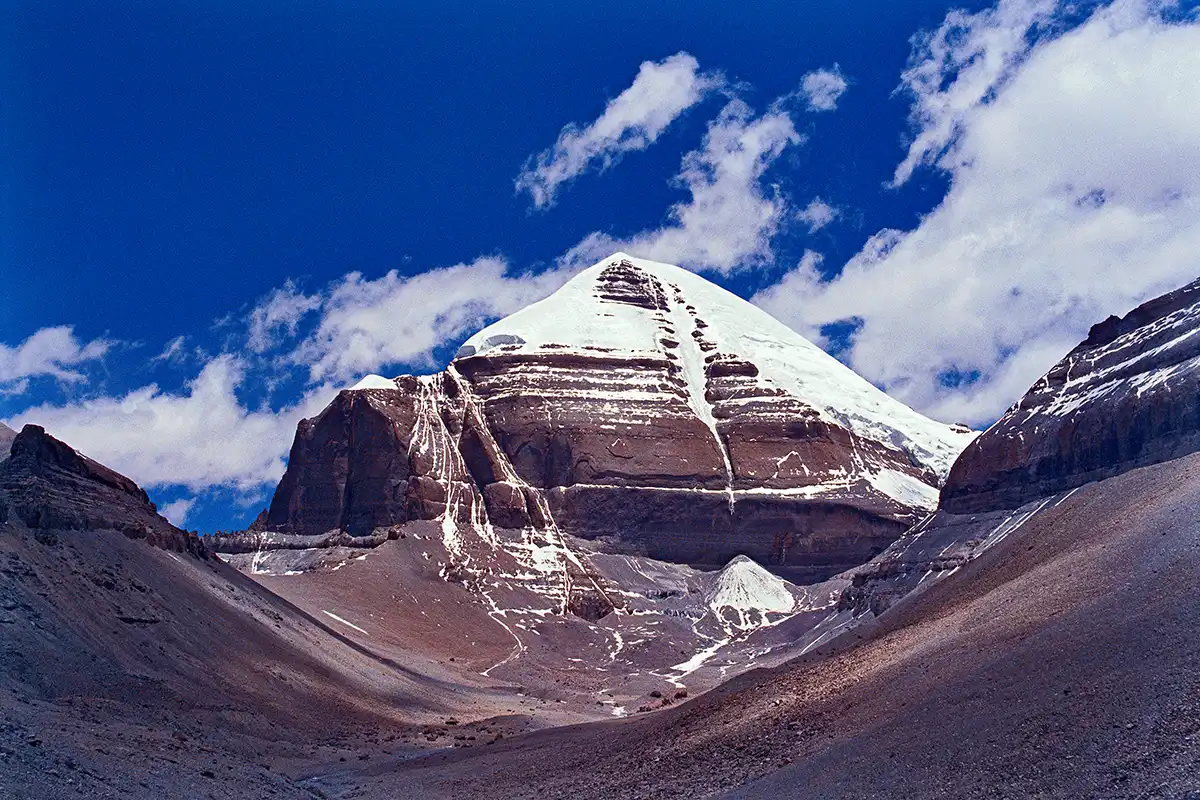Sacred Sites of Tibet
Tibet: A Realm of Sacred Landscapes and Spiritual Journeys
Tibet, the "Land of Snows," is a place where spirituality and geography intertwine, creating a landscape of profound beauty and deep-rooted traditions. From ancient monasteries perched atop mountains to tranquil lakes reflecting the sky, Tibet's sacred sites offer a glimpse into the rich tapestry of Tibetan Buddhism and the profound connection between its people and their environment.
Drak Yerpa
Nestled in the remote and rugged region of southwestern Tibet, Drak Yerpa is a sacred cave revered as the birthplace of Padmasambhava, the revered Buddhist teacher who brought Tantric Buddhism to Tibet. The cave is adorned with intricate murals and statues, and its secluded location adds to its mystique.
Ganden Monastery
Founded in 1409 by Je Tsongkhapa, the founder of the Gelug school of Tibetan Buddhism, Ganden Monastery was once the seat of the Gelug lineage and remains a significant pilgrimage site. Its imposing architecture and serene atmosphere draw visitors seeking spiritual solace and connection with Tibetan Buddhist tradition.
Jokhang Temple
Located in the heart of Lhasa, Tibet's capital city, Jokhang Temple is one of the most sacred sites in Tibetan Buddhism. It houses the revered Jowo Rinpoche statue, said to be an original image of Buddha brought to Tibet in the 7th century. The temple's vibrant atmosphere, with pilgrims circling the inner sanctum and prostrating themselves in devotion, is a testament to its enduring spiritual significance.
Lake Lhamo Latso
Also known as Yamdrok Yumtso, Lake Lhamo Latso is a shimmering turquoise lake revered as one of the four sacred lakes of Tibet. Its serene beauty and spiritual significance draw pilgrims and travelers alike, who come to admire its breathtaking scenery and seek blessings from the lake's resident deities.
Lake Nam Tso
Located at an elevation of over 4,700 meters, Lake Nam Tso is the largest saltwater lake in Tibet. Its vast expanse and remote location make it a place of solitude and spiritual reflection. Pilgrims believe that circumambulating the lake brings good fortune and blessings.
Lapchi
Situated in the Yarlung Valley, Lapchi is a sacred site associated with Guru Rinpoche and the founding of Tibetan Buddhism. The site is home to ancient caves, meditation retreats, and natural rock formations that are said to hold spiritual energy.
Mount Kailash
Considered the most sacred mountain in the world by four religions – Hinduism, Buddhism, Jainism, and Bon – Mount Kailash is a towering massif in the Trans-Himalayan Kailash Range. Its distinctive pyramid-shaped peak is believed to be the abode of Shiva in Hinduism and the cosmic Buddha in Buddhism. Pilgrims from around the world come to circumambulate the mountain, a journey considered to bring purification and spiritual enlightenment.
Mount Targo and Lake Dangra
Located in the southeastern corner of Tibet, Mount Targo and Lake Dangra form a sacred landscape associated with the life of Guru Rinpoche. The mountain is said to be the place where he first landed in Tibet, and the lake is believed to be a reflection of his pure mind.
Potala Palace
Once the winter residence of the Dalai Lama and the spiritual and political center of Tibet, the Potala Palace is a UNESCO World Heritage Site and a symbol of Tibetan culture and Buddhism. Its imposing architecture, adorned with gold roofs and intricate murals, houses a wealth of religious artifacts and sacred texts.
Sakya
Located in the Shigatse Prefecture, Sakya Monastery is the seat of the Sakya school of Tibetan Buddhism. Founded in the 12th century, the monastery is home to a rich collection of religious art and ancient texts, and its annual Sakya Drangchen festival attracts pilgrims from across the region.
Samye
Established in the 8th century by Padmasambhava, Samye Monastery is considered the first Buddhist monastery in Tibet. Its historical significance and spiritual importance make it a popular pilgrimage site for Buddhists seeking connection with the roots of Tibetan Buddhism.
Shigatse
The second-largest city in Tibet, Shigatse is home to Tashilhunpo Monastery, the traditional seat of the Panchen Lama, the second-highest spiritual leader in Tibetan Buddhism. The city's vibrant market and bustling streets offer a glimpse into the everyday life of Tibetans, while its monasteries and temples provide a window into the region's rich spiritual heritage.
Tashilhunpo Monastery
Founded in the 15th century by the first Panchen Lama, Tashilhunpo Monastery is a sprawling complex of temples, chapels, and living quarters for monks. It houses a giant statue of Maitreya, the future Buddha, and is a center for Buddhist learning and practice.
Tirthapuri
A sacred hot spring site believed to have been blessed by Padmasambhava, Tirthapuri is a pilgrimage destination for both Hindus and Buddhists. The hot springs are believed to have healing properties and are often used for ritual bathing.
Toling
Located in the far western region of Tibet, Toling Monastery is known for its unique blend of Indian, Kashmiri, and Tibetan architectural styles. Founded in the 10th century, the monastery was once a major center of Buddhist learning and is now a UNESCO World Heritage Site.
Yarlung Valley
The Yarlung Valley, considered the cradle of Tibetan civilization, is home to numerous ancient tombs, temples, and monasteries. It is a place of deep historical and spiritual significance for Tibetans.
Note:
Please note that access to Tibet may be restricted for foreign visitors, and it's essential to check travel advisories and obtain the necessary permits before planning a trip.

Martin Gray is a cultural anthropologist, writer and photographer specializing in the study of pilgrimage traditions and sacred sites around the world. During a 40 year period he has visited more than 2000 pilgrimage places in 160 countries. The World Pilgrimage Guide at sacredsites.com is the most comprehensive source of information on this subject.


